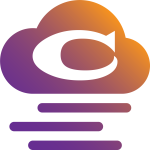You don’t need past remote roles on your resume to land one. You need proof you can work well without constant oversight, communicate clearly, and manage your time. The best part? You likely already do these things—you just haven’t framed them the remote way yet.
This guide walks you through how to get a remote job with no experience—from showcasing remote-friendly habits to building instant credibility with side projects and simple tools. No fluff. No gatekeeping. Just smart positioning.
Start here if you’re new to remote work ➝ Beginner’s Guide to Remote Work
Reframe Your Past Roles for Remote Readiness
If you’ve worked in an office, retail, customer service—or even in school group projects—you’ve already used key remote skills. The difference is how you talk about them in resumes, interviews, and your online presence.
Features
Highlight moments you worked without direct supervision.
Show examples of clear updates, documentation, or reports.
Mention experience with email, calendars, Notion, or Trello.
Frame deadlines or scheduling as proof of self-management.
Mention collaboration across departments or locations.
Call out learning new tools or processes on your own.
The goal: repackage your in-person experience into language that feels remote-first. Instead of listing tasks, describe how you delivered results independently and communicated clearly—two must-haves for remote teams.
Build Remote Proof Without a Resume Gap
You don’t need past job titles to prove remote readiness—you need evidence you can thrive without being micromanaged. Think of it like building a digital trail that says: “I get stuff done, and here’s how.”
Even without formal experience, you can create powerful proof by showing up online, launching simple side projects, or collaborating with others virtually. It’s all about visibility.
Features
Use Notion, Google Docs, or GitHub to create digital examples of your work.
Start small with task-based platforms or offer help to local businesses online.
Share completion certificates that highlight remote-relevant tools or workflows.
Join a remote hackathon, online meetup, or async team project.
Use Carrd or Webflow to house samples and testimonials.
Post on LinkedIn or Medium about remote tools, habits, or lessons.
This approach doesn’t just fill the gap—it positions you as someone who thinks and works like a remote professional, even if you’ve never been paid to do it.
Use Your Cover Letter to Build Trust, Not Just Tell Your Story
If your resume shows the “what,” your cover letter should show the “how.” This is where you prove you’re not just interested in remote work—you’re already working in a way that fits it.
Skip the generic intros and instead open strong: highlight a remote habit you’ve built, a side project you’ve completed, or a tool you’ve mastered. Think of your letter as a mini case study in remote-readiness.
One candidate opened their letter by explaining how they used Notion to organize a cross-timezone group project—before ever landing a remote job.
Be specific. Name the remote tools you’re using. Talk about async workflows you’ve practiced. And always close with confidence—employers want someone who can work independently and communicate clearly, not just someone who wants to “try remote.”
Where to Go Next: Build Smarter at Every Stage
Whether you’re just starting out or leveling up your remote career, the path forward is clearer when you know what to focus on. These guides help you grow from beginner habits to advanced strategy—no fluff, no guesswork.
Features
Understand the basics of remote work, tools, and daily structure.
Learn how to write, pitch, and apply as a beginner.
Create real-world proof through side projects and small gigs.
Add certifications and async workflows to boost your value.
Shift from task-doer to outcome-focused contributor.
Step into leadership, delegation, and async team-building.
FAQ: Getting a Remote Job with No Experience
Still wondering if you’re actually ready for remote work? These are the most common beginner questions—answered clearly, without the fluff.
Got more questions? That’s a good sign—you’re thinking like someone who wants to do this right. The best next step is to take action on one thing you’ve learned here today.
Final Checklist: Prove You’re Remote-Ready
Use this checklist to turn your current experience into remote credibility—even without a remote job on your resume. Pick one or two to act on this week.
Features
Talk about time management, communication, and self-led work.
Use Notion, Docs, or Trello to create visible proof of work.
Position your habits, tools, and mindset for remote success.
Get comfortable with Loom, Slack, and calendar blocking.
Post on LinkedIn or GitHub to build early visibility.
Target roles that welcome beginners and async thinkers.
Next Steps: Start Showing Up Like a Remote Pro
You don’t have to wait to be hired to act like a remote worker. Every post you share, tool you learn, or side project you launch builds proof. And that proof is what gets you hired—experience or not.
- Get a Remote Job – No Experience Needed
- Async vs real-time remote
- ATS Keyword Strategy
- Top Soft Skills for Remote Jobs
- Office vs Remote Job Skills | What Really Changes
- What Remote Recruiters Look For
- Remote Resume Revamp | How to Tailor Your Resume for Remote Roles
- Top Remote Jobs That Pay Well in 2025
- How to Work Remotely While Traveling (Digital Nomad Edition)
